As we go through life we can lose our ability to listen to our innate hunger and fullness cues. This commonly happens after following diets, food rules, and hopping on the merry-go-round that is the restrict-binge cycle. This blog post will introduce you to a tool called the “hunger fullness scale” that can help you regain your ability to listen to your body and become an intuitive eater.
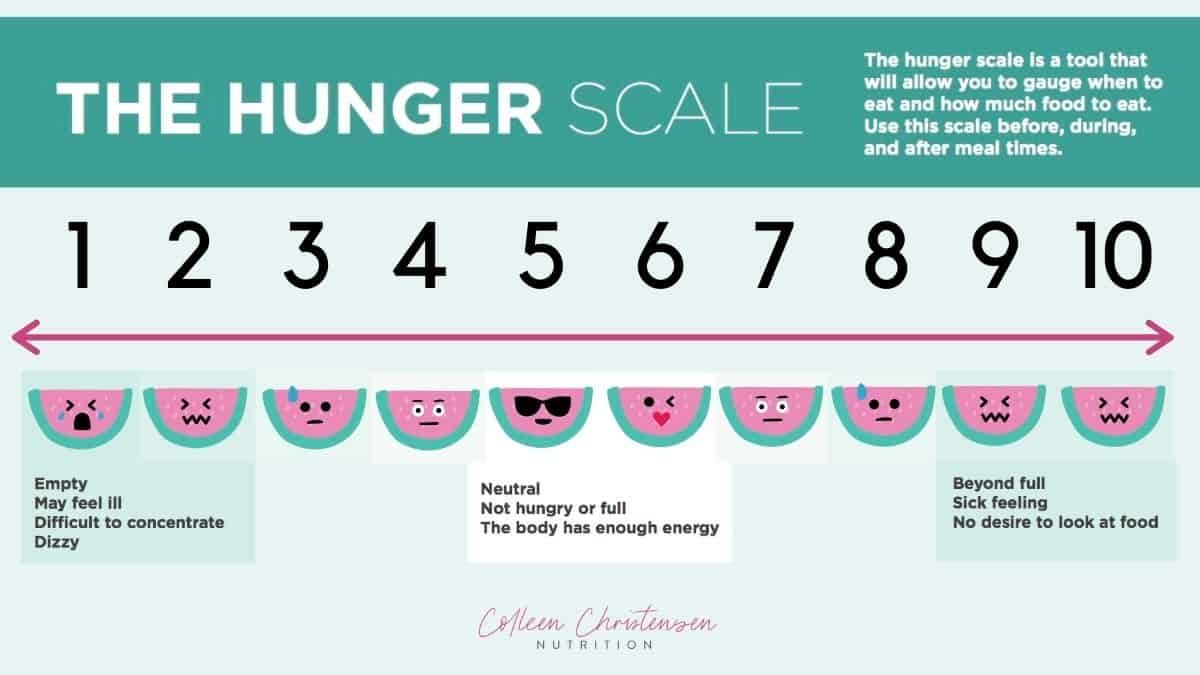
What Is The Hunger Fullness Scale?
The intuitive eating hunger scale is a tool, a scale of 1 to 10, that is used to help you understand your hunger and fullness. It helps you tune into your body’s natural energy regulation. Yep! Your body can naturally regulate it’s energy needs on it’s own. No counting calories/points/macros/etc!
Our bodies regulate their energy intake by giving you certain hunger and fullness cues. But here is the thing… we can LOSE those cues after not listening to them, such as when we diet. Don’t worry, I have an entire blog post on how to get hunger cues back to fix that. Be sure to give that a read if you’re not sure if you even HAVE hunger cues. It’s a key step to using the hunger fullness scale!
The hunger scale helps you to avoid discomfort from getting uncomfortably hungry (hangry!) or uncomfortably full. Using the intuitive eating hunger scale is the best way to appropriately fuel your body since our bodies energy needs differ from day to day. Way better than any app could! You are NOT an equation. And an app does NOT know your life.
PS. I’ve got a free download of the hunger scale at the end of this post for you!

Why You Need To Practice Using The Hunger Scale
To get started with using the hunger scale it’s important to note that you likely won’t know HOW to use it at first and this is normal! At first you may only be able to identify when you’re super hungry or super full, but nothing in between. Again, totally normal.
Here is my favorite analogy to use: I want you to pretend you’re an archer (yep, with a bow and arrow!) and you’ve NEVER shot it before or it’s been a super long time. You’re probably NOT going to hit a bullseye… or even close… right?! You’ll probably be way off at first but the more you practice the closer you get.
You don’t go from shooting into left field to hitting a bullseye overnight. You’d probably inch inwards getting closer and closer. At the same time it starts to get easier and easier. Same thing here! You won’t “get it” right off the bat but the more you practice using the hunger fullness scale the more you’ll be able to become attuned to your body’s cues and honor it’s natural energy regulation.
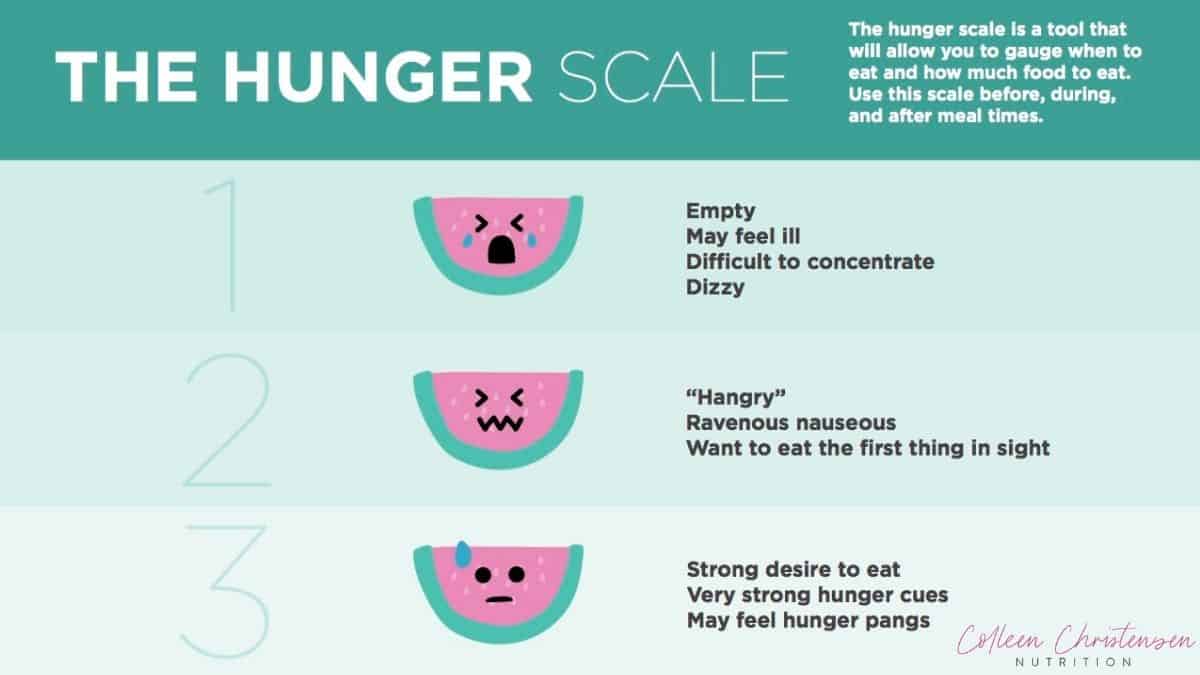
How To Use The Intuitive Eating Hunger Scale
Step #1: Check in with the hunger scale 3 times per meal
Pick just one meal (or snack) to use the hunger scale at. Don’t overwhelm yourself and do it every time you put a morsel of food in your mouth! Start small. I’m a big fan of baby steps and then letting those snowball naturally! This is how I base all of my intuitive eating teachings in The SociEATy. It works!
Now, at that meal check in on the hunger scale before you begin eating. Take note of where you’re at. Then, check in again halfway through and again at the end. I call this exercise with the 3 check in points a “mid meal check in”.
Step #2: Reflect
Now that you’ve used the intuitive eating hunger fullness scale 3x during your meal it’s time to reflect. Take note of where you started the meal. Were you overly hungry? Maybe not hungry at all? What about in the middle? Did you find you were eating on autopilot? Did you notice your hunger change? Now what about the end? Did you walk away comfortable? Too full? Still hungry?
This step is KEY but one that people often miss, causing them to feel like intuitive eating “doesn’t work”. The journey to food freedom is all about learning. And in order to do that we have to reflect. I truly believe that there is no such thing as “bad” or a “mess up”. It’s all simply just a chance for us to learn.
Take note of your reflections and observations (without judgement! Pretend you’re just a scientist collecting data) and ask yourself what you’d maybe change for next time. Maybe it’s starting the meal when you’re less starving. Maybe it’s using a mindful eating exercise to stay present and attuned to your fullness and satisfaction cues throughout the meal, etc.
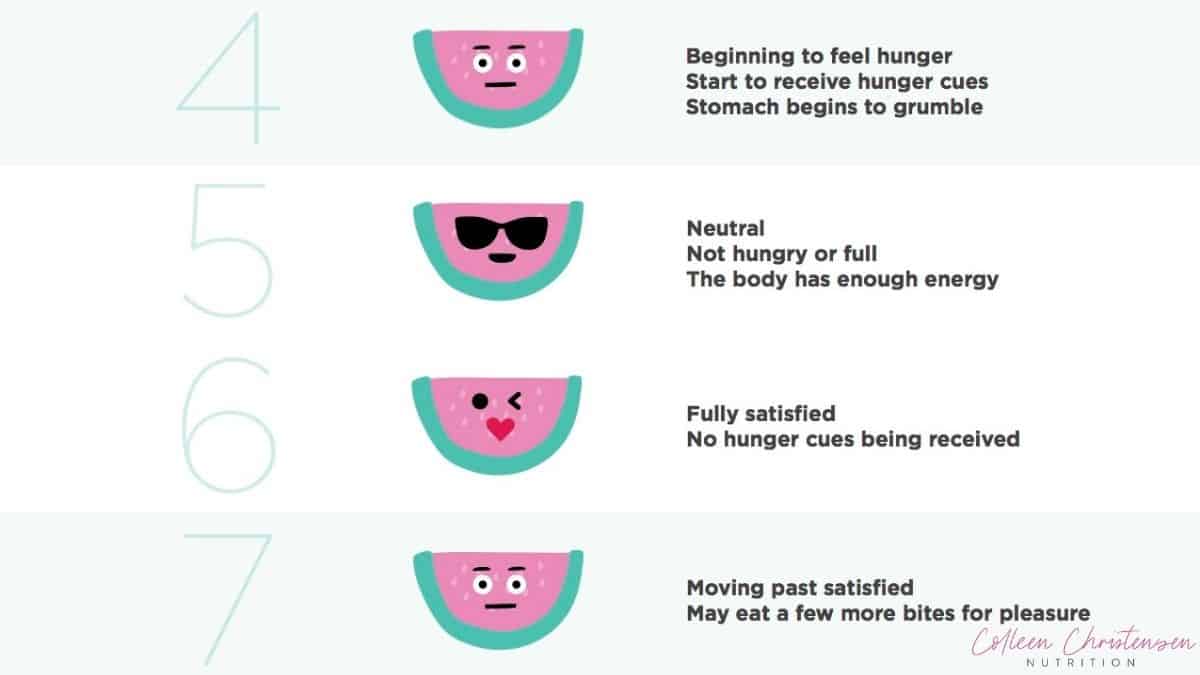
Step #3: Take Note Of Patterns
As you continue to practice using the hunger fullness scale you’ll want to notice any patterns emerging. Do your hunger cues have a rhythm throughout the day? Having certain intervals that feel good and others that feel too long? What about how much you eat, like when you walk away from the table stuffed, and the time since your last meal/snack? Maybe there are certain types of food that keep you full longer than others.
Oftentimes when we get too hungry (too low on the hunger fullness scale) we’re more likely to overeat because it’s much more difficult for us to listen to our true fullness and satisfaction cues.
Imagine that you have to swim from one end of a long pool to the other totally under water. When you come up for air at the end you’ll take a BIG breath since air hasn’t been accessible for a while. The same thing happens with food. When we don’t give our bodies energy (food) frequently enough and we get too hungry we’re likely to intake a lot of it, likely more than feels good!
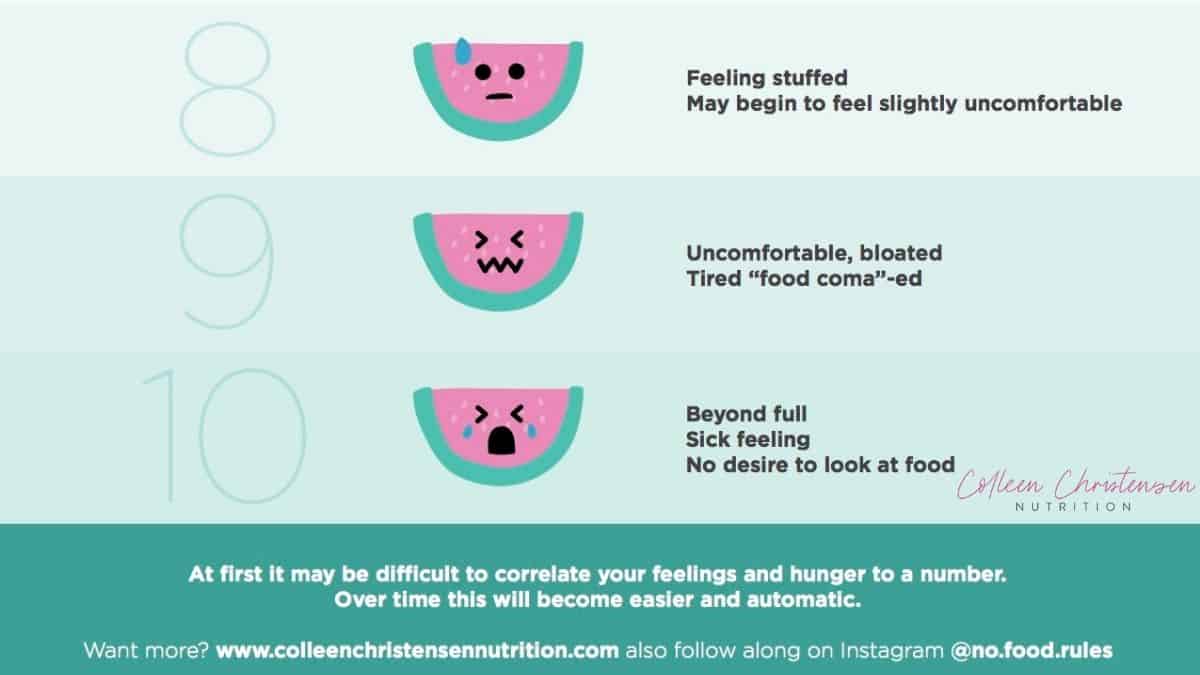
A General Guide To Using The Hunger Fullness Scale
A lot of people ask me what number is “best” to start and stop eating at. The answer is that there is no “best” number. There are SO many things that play into when to eat such as using what I call “practical hunger”, taste hunger and cravings, etc. It ebbs and flows. And it’s 100% OKAY to eat if you’re not feeling hunger cues! This is NOT the hunger and fullness diet. I talk about this nuance more in my blog post on boredom eating.
However, generally what tends to feel best for most people on a regular basis is to start eating at a 3-4 and finish a meal at a 6-8. Fullness is a little more difficult to determine VS hunger since it isn’t always a primal. For this reason I do recommend first focusing on the hunger side of things VS the fullness.
Finding out where YOU feel best starting and stopping takes experimentation and some trial-and-error. Nothing is bad! Everything is a learning experience! Eat past fullness? No biggie! Now you know! Didn’t eat enough? No sweat! Pocket that nugget of wisdom for next time!
Personally, I find that in the morning stopping at a 6-7 feels best for me but at dinner time I go more towards an 8 to ensure I have energy to power me through till the morning.
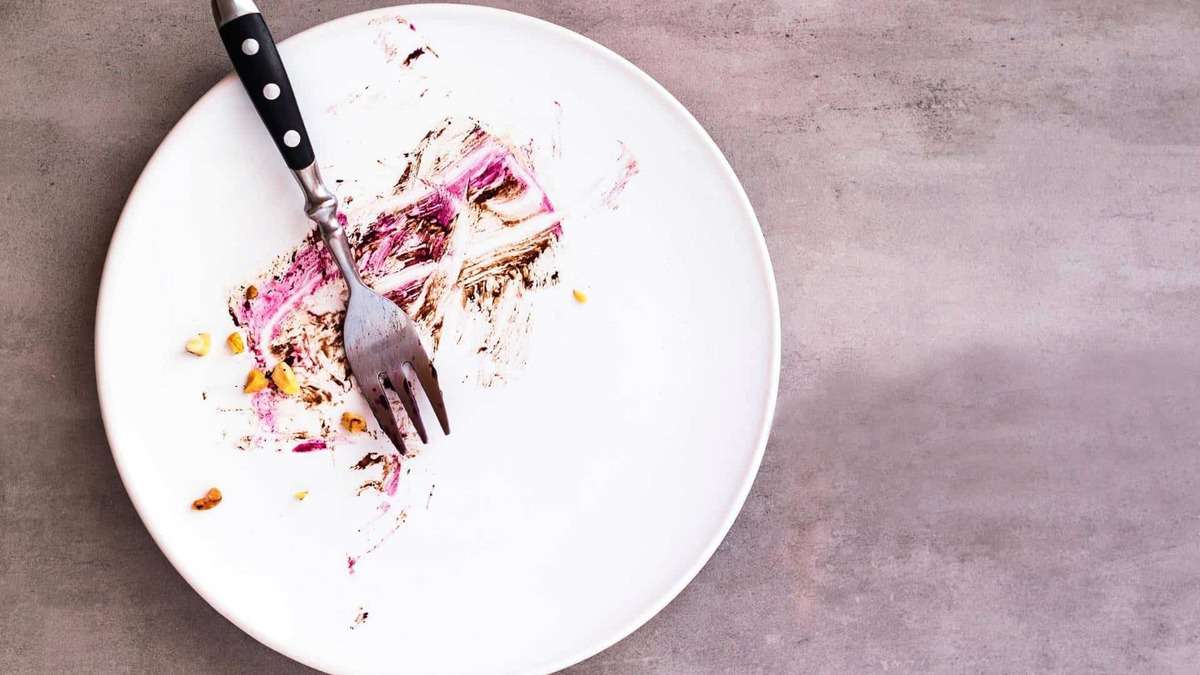
Important Things To Remember
Learning how to use the intuitive eating hunger fullness scale takes time! The “right” way to use it is how it works for YOU. You’re simply collecting data points and using the knowledge that you’ve gained from them to do that feels good to you.
If using numbers is triggering to you try thinking of a tank of gas. Imagine that little gasoline gauge that is the dashboard of a car. Are you feeling empty? Do you have ½ a tank? Maybe ¾? Are you filled to the top?! Totally fine to scrap the numbers and just think about it this way!
Also, if focusing on hunger and fullness seems diet-y to you that is 100% okay. This is just ONE tool that you can have in your toolbox and if you think that this tool isn’t suited for your job (i.e. your life!) then you can leave it in there. Nothing wrong with that! Everyone is different.
I’ve included a copy of the hunger scale that I use and teach The SociEATy members how to use too (we have an entire lesson in how to use it!) in my free e-book, The Ultimate 5 Step Guide To Food Freedom, which you can download!
What do you think of the hunger fullness scale? Do you think this will be a helpful tool in your intuitive eating journey? Leave a comment and let me know!
Other Blog Posts You Might Like:
XOXO
-Colleen
PS. If you’re ready to finally find food freedom that actually feels good (mentally AND physically!) join us inside of The SociEATy to get your step-by-step roadmap for how to do just that AND gain hundreds of new food freedom BFFs to give your support, encouragement, and advice!
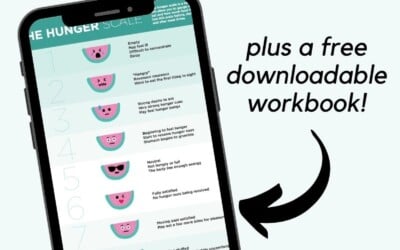
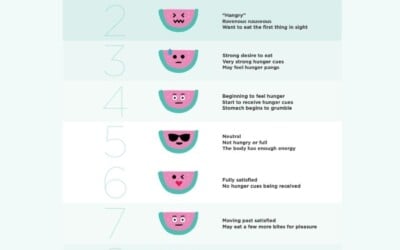
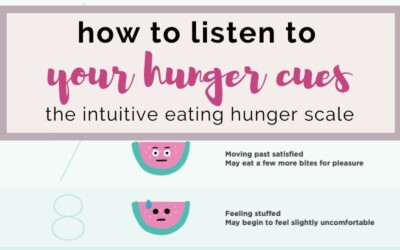
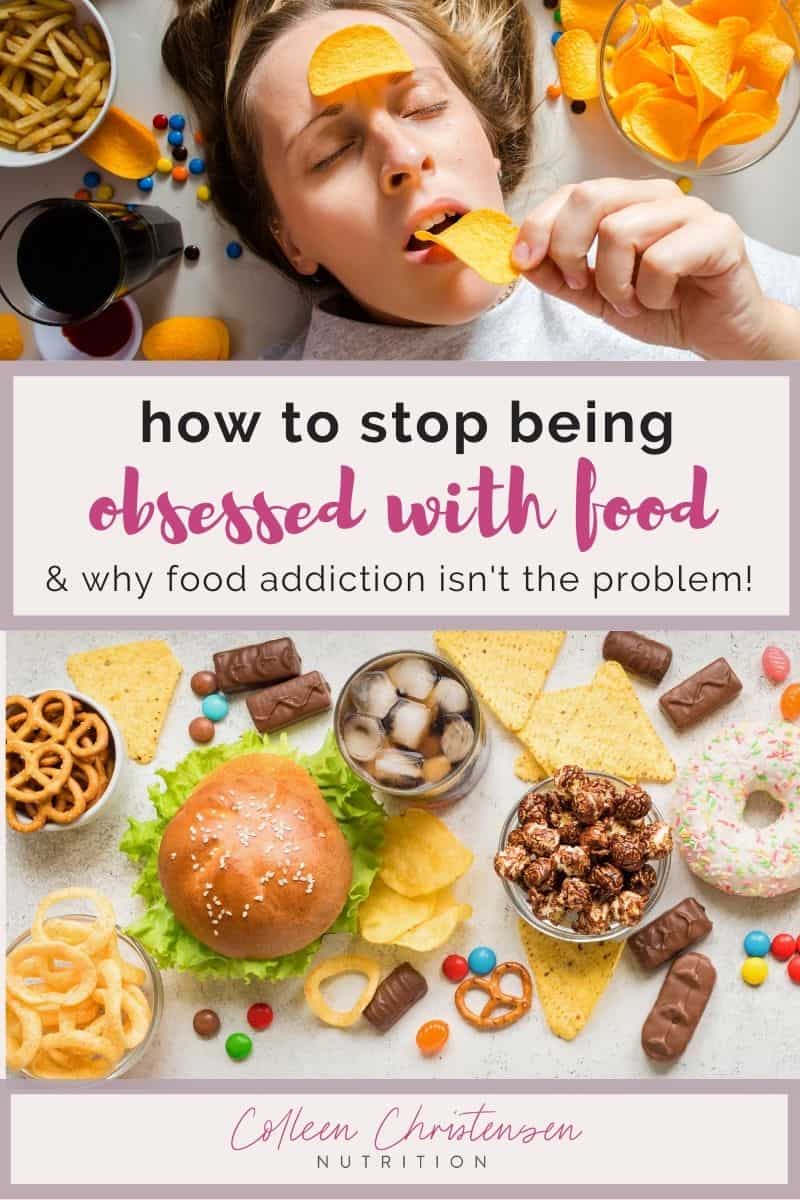
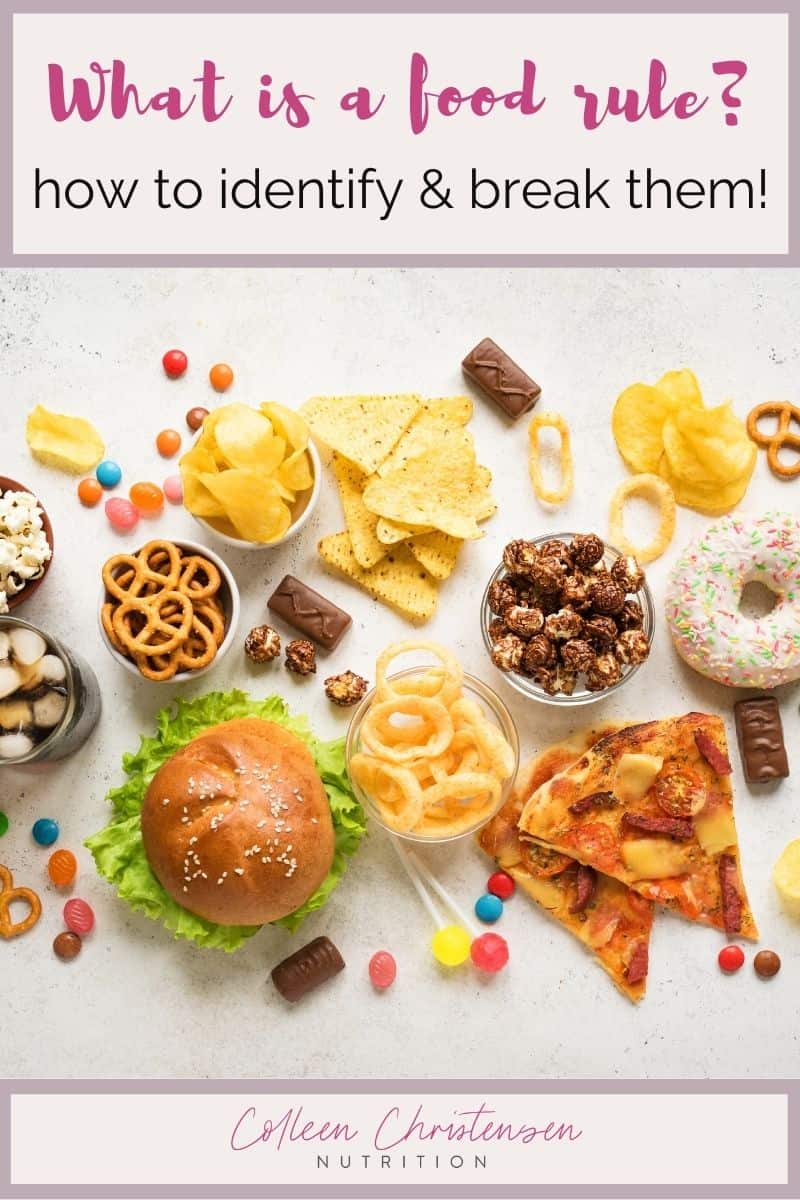
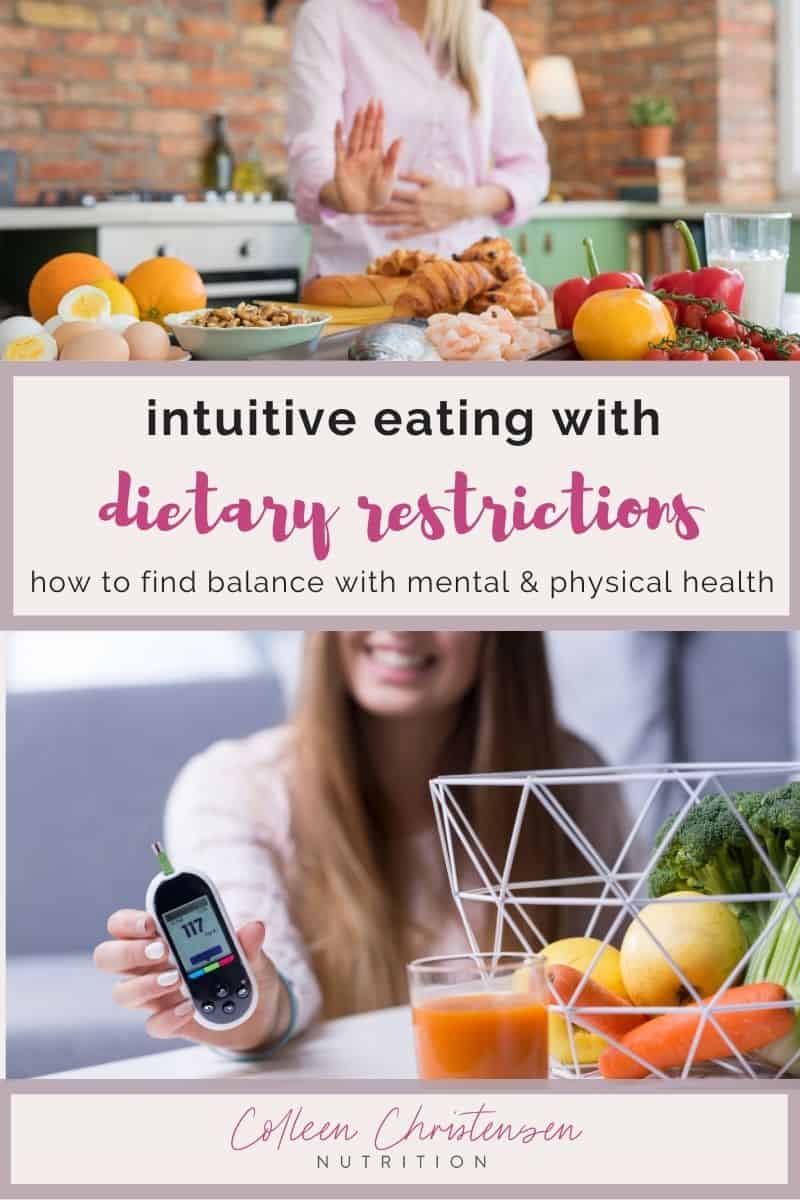
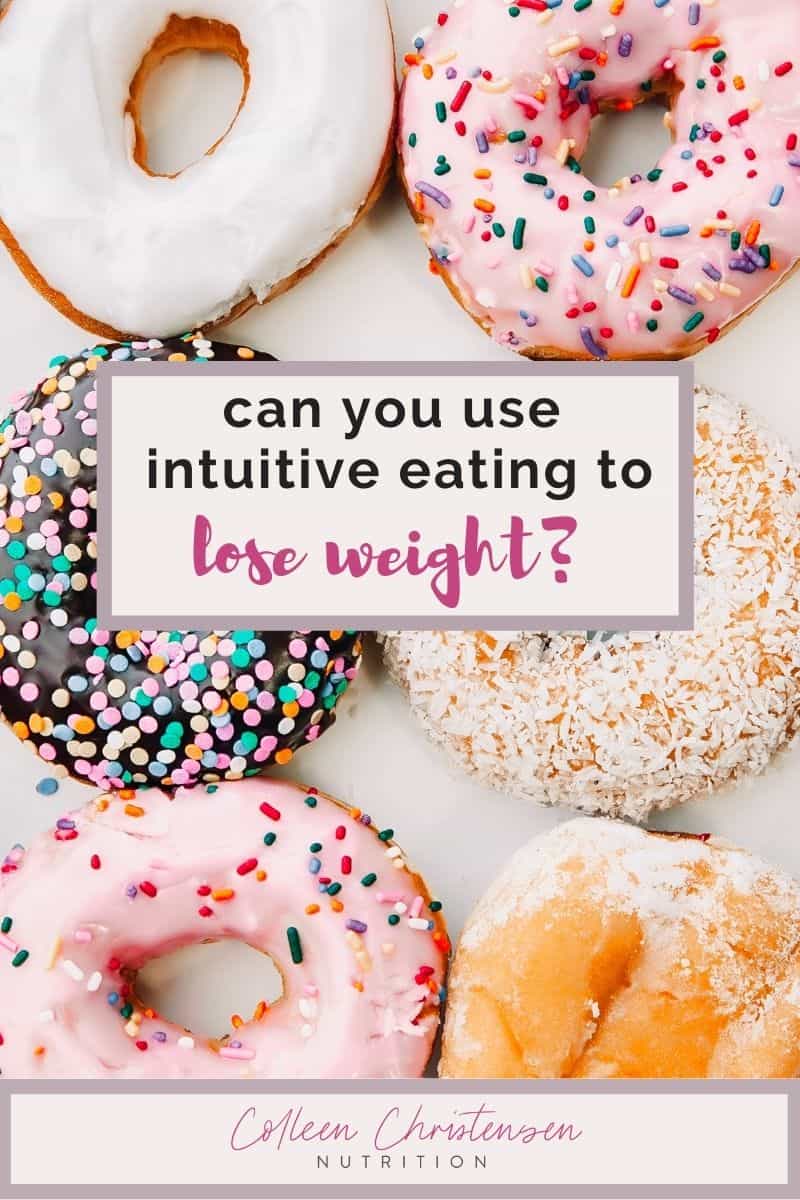


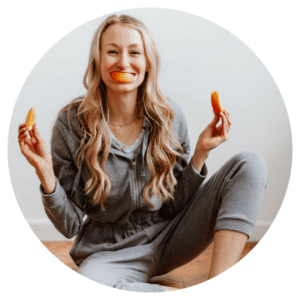
Laura says
Do you have a PDF of your intuitive eating scale pictured in this post? I’d really like to print it and post it in my kitchen!
Colleen says
You can get a copy in my free e-book!
Doris Marie Ward says
Yes please